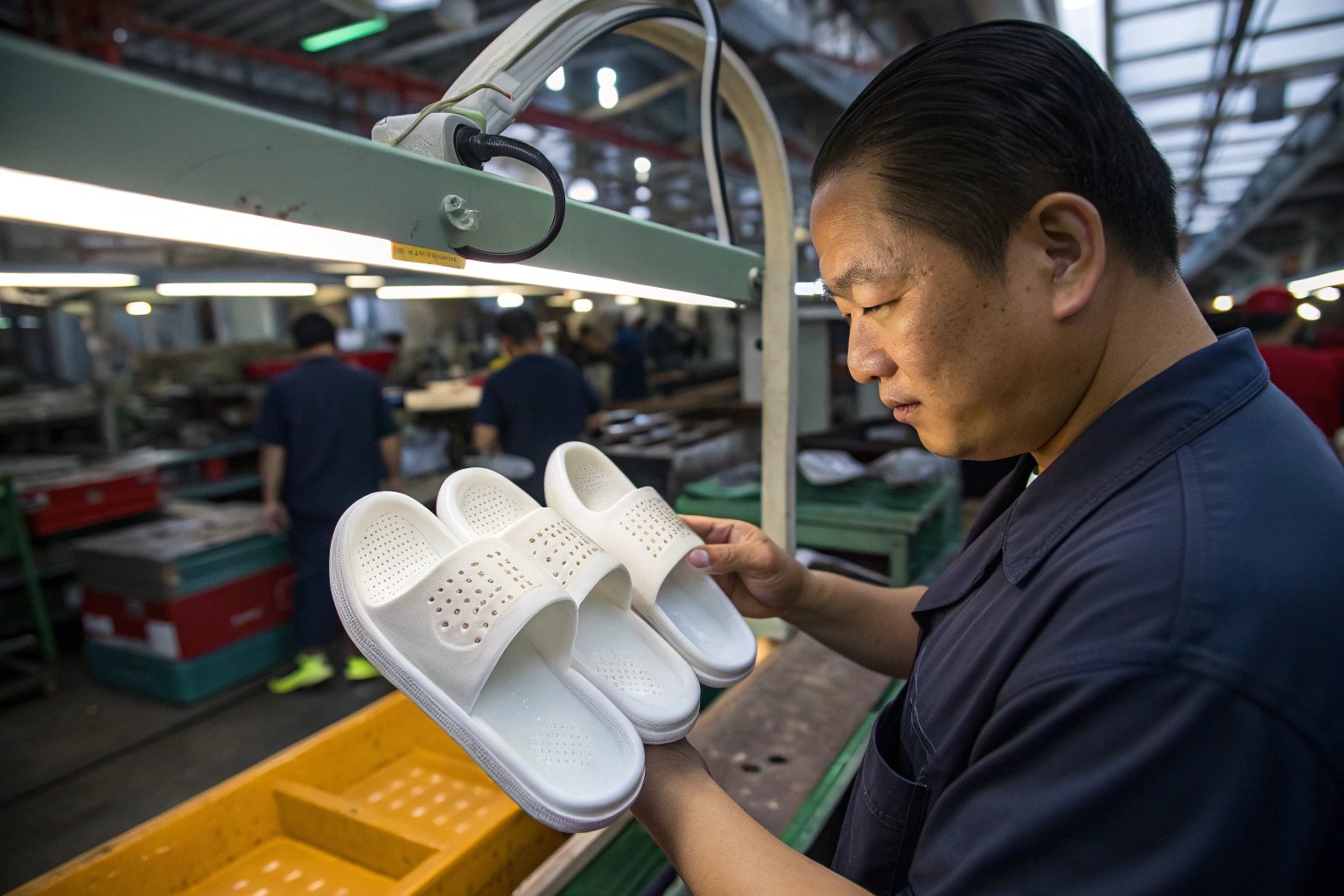Many businesses dealing with plastic slippers encounter various quality issues. Addressing these problems early can prevent significant losses and ensure customer satisfaction.
Common quality problems in plastic slippers include poor durability, improper sizing, and defects in finishing. These issues often lead to customer dissatisfaction and increased returns. Identifying and addressing these problems can significantly enhance the quality and reliability of plastic slippers.

Understanding these issues and implementing strict quality control processes can help. Let’s delve deeper into each common quality problem to better comprehend their causes and solutions.
Why is Durability a Concern in Plastic Slippers?
Plastic slippers face wear and tear that can compromise durability. Frequent complaints center around cracks, breaks, and worn-out soles after minimal use.
Durability problems arise from subpar materials and inadequate production processes. Slippers made from low-grade plastic materials often wear out quickly. Implementing quality material sourcing and improved production techniques can boost slipper durability.

To enhance durability, manufacturers use high-quality polymers and ensure even distribution during molding. Frequent quality checks at each production stage also help catch durability issues early. By adopting these measures, slippers can withstand daily wear and tear, ensuring customer satisfaction and repeat business.
How Does Improper Sizing Affect Plastic Slippers?
Sizing issues are prevalent with plastic slippers. Mismatched sizing results in discomfort and reduced usability, impacting customer perception negatively.
Improper sizing is often due to inconsistent manufacturing processes and lack of standardization. Ensuring proper fit requires precise measurements and adherence to size charts during production. Regular checks and adjustments in the manufacturing process can minimize sizing discrepancies.

Manufacturers should invest in consistent size templates and train staff to maintain strict adherence to them. This, coupled with consumer feedback and testing, refines size accuracy. Working closely with clients to understand market preferences can also result in better-designed slippers, reducing size-related returns.
What Finishing Defects Commonly Occur in Plastic Slippers?
Finishing defects range from rough edges to poorly attached parts. These defects mar appearance and compromise user comfort.
Finishing defects usually stem from errors in the final production stages. Effective quality control measures, including thorough inspections, can identify finishing issues like uneven trimming or misaligned components, ensuring superior product aesthetics and comfort.

Implementing detailed finishing guidelines and regular audits ensures every slipper meets high aesthetic and functional standards. Investing in skilled personnel and precision tools for final touches can drastically reduce defects and boost overall product appeal. Collaboration with quality assurance teams is crucial for continuous improvement.
Conclusion
Addressing durability, sizing, and finishing issues ensures high-quality plastic slippers, leading to enhanced customer satisfaction and reduced returns.

